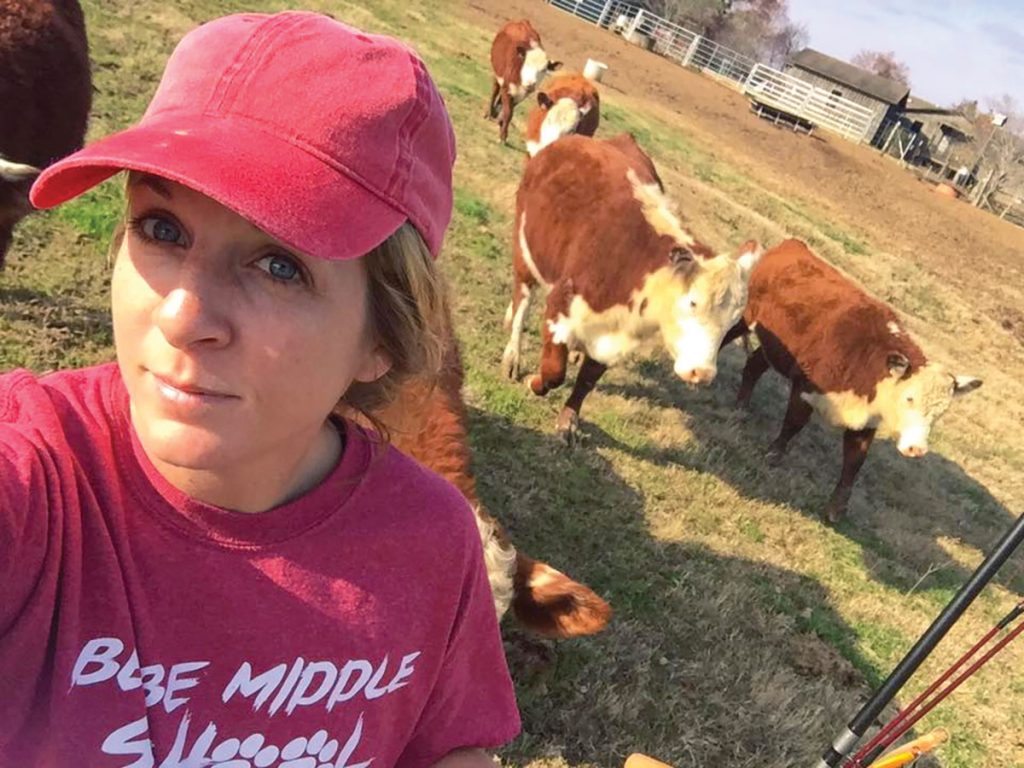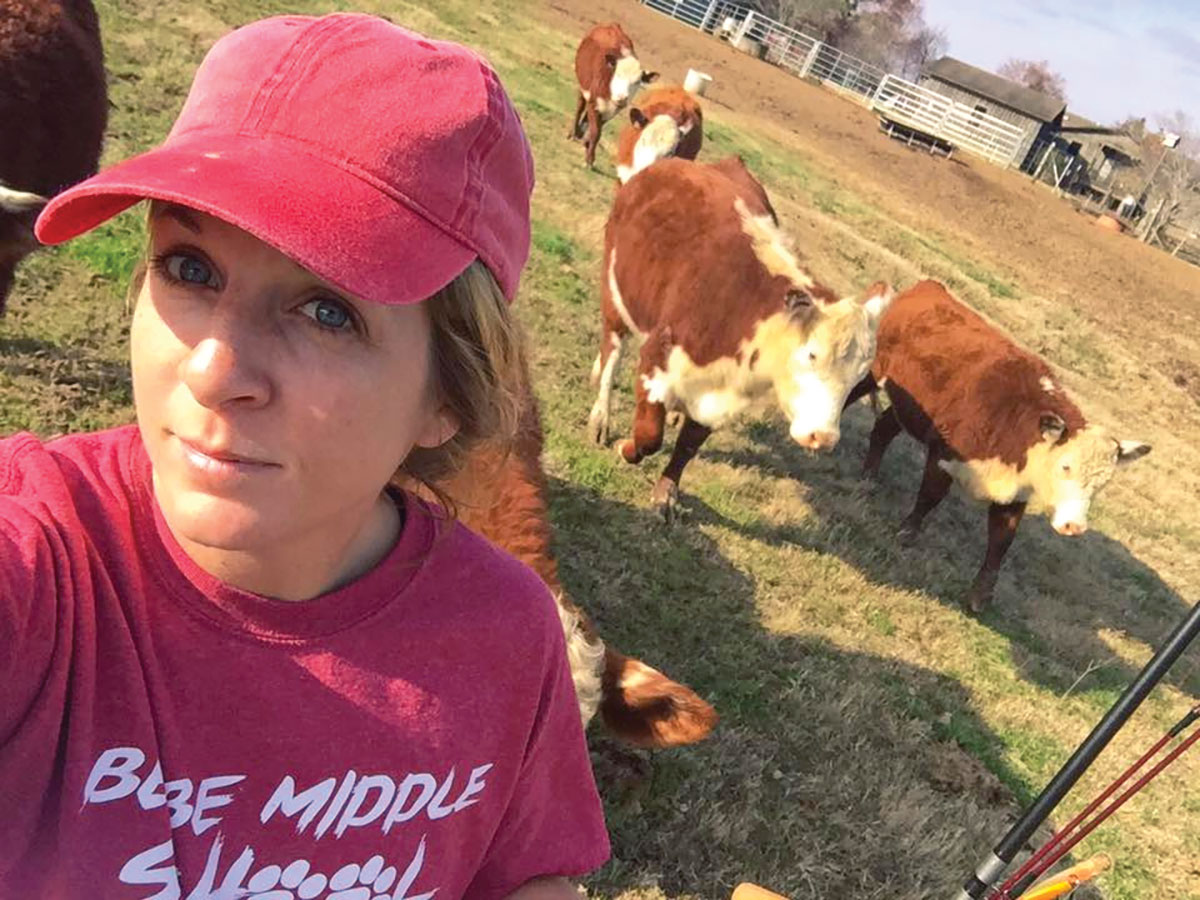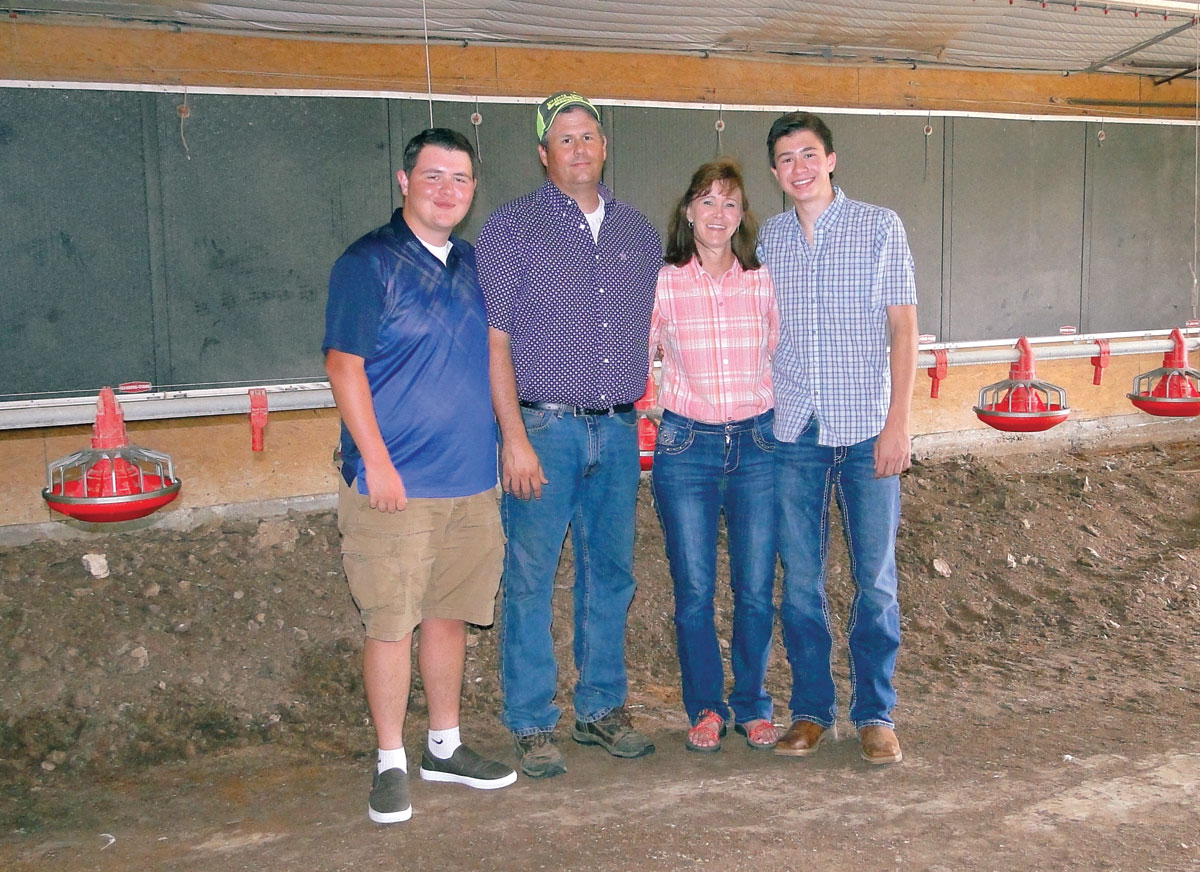
Clint and Cindy Emfinger began their Hereford herd in 2006
Clint and Cindy Emfinger run a Hereford breeding operation on 80 acres near Searcy, Ark.
Cindy’s great-grandparents, Clyde and Mary Nicholson, first purchased the land after the war in the 1940s. Clyde and Mary had five children, although only two survived. One of those was Cindy’s grandfather.
“Knowing the history of the land somehow makes the tie stronger,” Cindy said.
Clint and Cindy live on the farm. Their house was built in 1983 by her grandfather and father who were carpenters. Her parents, Woody and Barbara, ran cattle all her life. Then in 2005, an EF 0 tornado stormed through their land and split the farm in half, taking out a barn her grandfather and great-grandfather had built, as well as one her father had built. The storm also made the land unfit for cattle because the fencing was severely damaged in some places and totally gone in others. Woody decided not to rebuild and sold his cows while deeding some of the land to Cindy.
“Clint and I recognized that maintaining the land would require a lot of bush hogging, so we started repairing the fence and went into the cattle business,” Cindy explained. “We were fortunate enough to have James and Barbara Bradley as mentors. They were patient and kind and willing to answer any questions. Clint had been raised in town, and we had a lot to learn but encountered many wonderful people who helped us on our way.”
Though Cindy was raised in a small subdivision, she spent much time at the farm.
The first big challenge for the couple was deciding what kind of cattle they wanted to raise. The most important criteria was temperament, which would increase the safety of their operation. They chose polled Herefords partially because Mr. Bradley was a leader amongst the area’s Hereford farmers, and partially because Clint researched and visited the Bradley farm and found them to be gentle and great mommas.
“Clint is the stronger rancher,” Cindy said, “He totally embraced the transition, which often morphed into a challenge for both of us. He is good at finding efficient solutions, handling the mechanics, and extensively researching before we make decisions.”
In 2006, after repairs were completed, the couple started with registered Herefords from James Bradley five bred heifers and one cow/calf pair. They now have 22 cows and one breeding bull, which they change every two years, so they can retain some of the heifers.
Clint and Cindy believe it’s important to invest in superior bulls.
They sell bulls and some heifers by private treaty. Cindy very much appreciates the private treaty system, partially because she enjoys the tips and interesting stories of each potential customer. Also, it is a very satisfying experience when customers come back because they like what the farm produces.
The Emfingers run a 60- to 90-day calving season in the fall. They followed the advice of James Bradley who explained one reason for fall calving is fewer flies.
Customers want bulls of different ages. Some want them as soon as they are weaned at 7 to 8 months and will often buy a pair that have been raised together. Others only want a bull that is ready to go to work. The Emfingers usually have both options to offer for sale.
One of the most stressful times for Cindy is waiting for cows to calve. Cindy is always excited when the young calves learn to run and frolic. She feels it’s as if they have a “rocket powered tail.” When females are ready to give birth, they are moved to the farm’s “nursery.” This is especially important for first-time heifers, and the confined area eases stress for them and for Cindy.
Clint and Cindy rely heavily on vets Chad and Natalie Towns at the Honey Hill Animal Hospital. The herd is worked twice a year, in the spring and the fall, according to a protocol designed by the vets. Clint and Cindy also use their recommendations on worming, alternating chemicals to prevent resistance. They use an injectable in the spring and an oral drench or paste in the fall.
Brian Haller, White County Extension agent, is another of their mentors. He has been helpful in pasture composition, rotation, and weed control. Consequently, soil is tested every other year with the pastures being mostly Bermuda and fescue, and are over seeded with winter wheat or rye. Clint is also experimenting in a small area with an endophyte-friendly fescue.
The herd is mostly hay and grass fed and always has free choice mineral with the exact composition changing according to need and season. Protein tubs are put out in the winter and in the spring when the grass is new and does not yet have sufficient protein to promote healthy development. The Emfingers also occasionally use a co-op ration with 14 percent protein.
Clint and Cindy raise their own hay and custom bale hay on shares. According to Cindy, their biggest challenges are to make sure they have enough hay for the cattle and not to exceed the proper number of cattle for their acreage.
The Emfingers have two daughters who help with the operation when needed. They also have two grandchildren, Ava who is 9 and Henry who is 4.
“The kids love the farm so much,” Cindy said. “They often go on great adventures on the farm so hopefully this will be a legacy for them. Making memories is the gift of grandchildren and one of God’s best blessings.”







